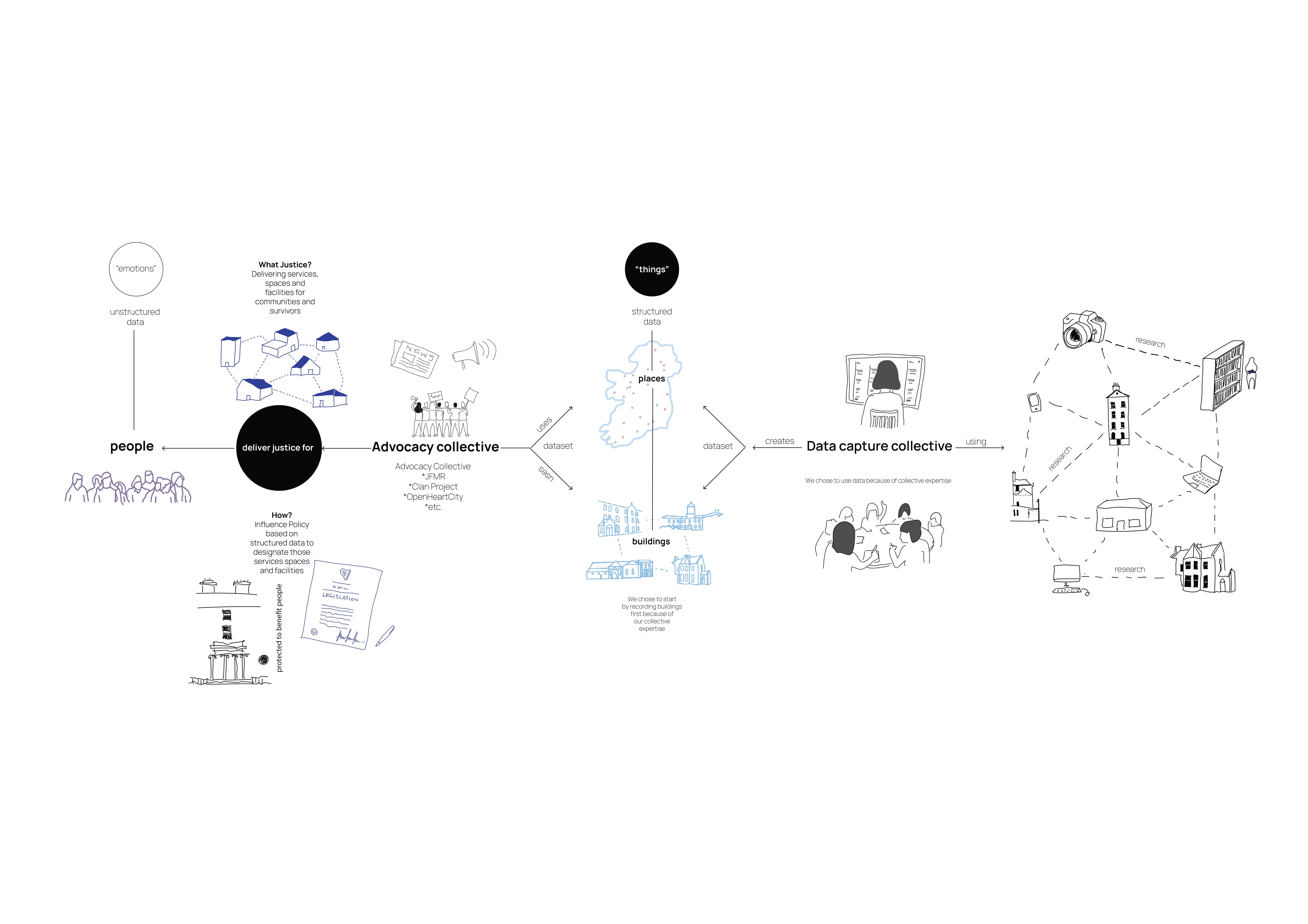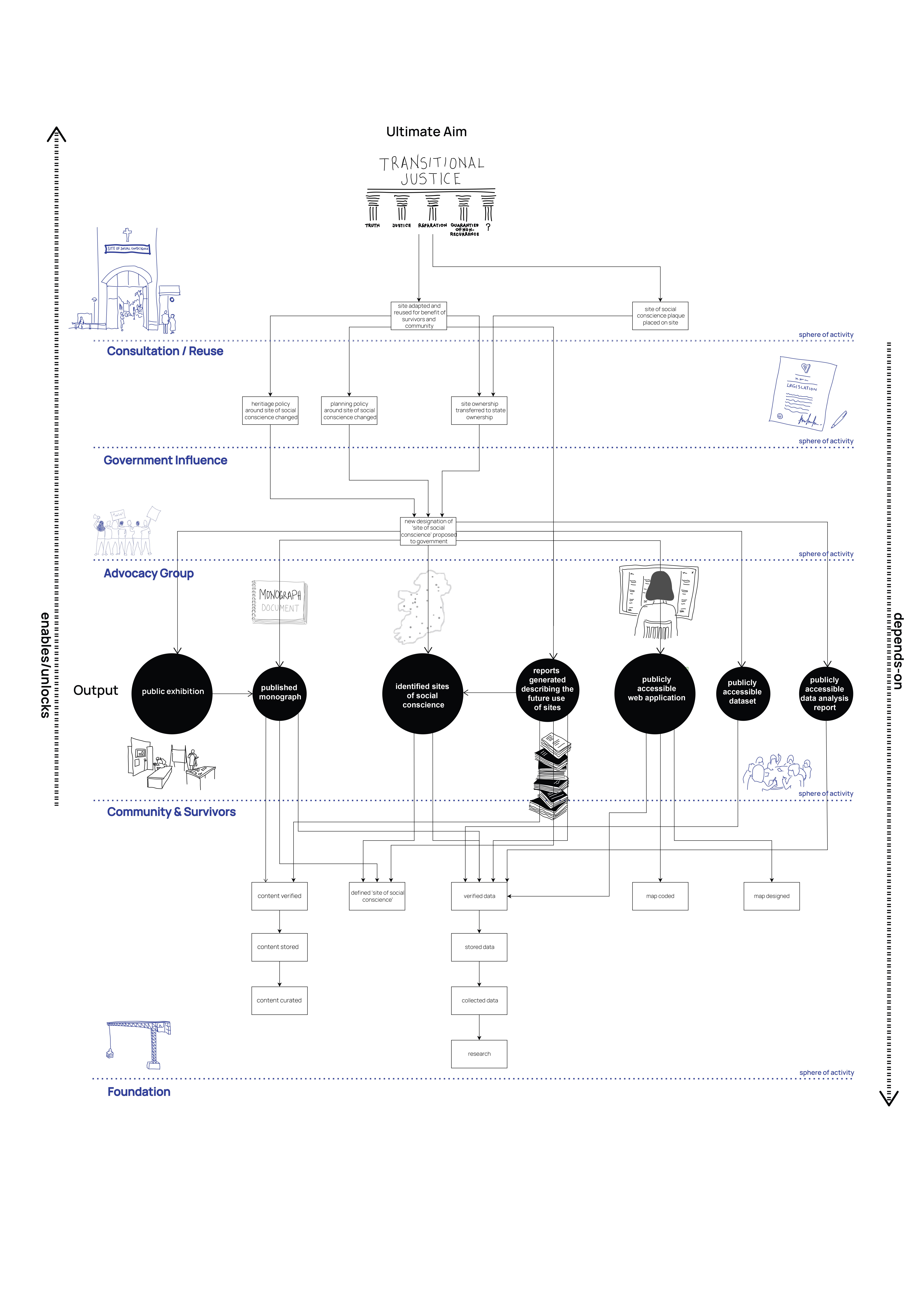(In)visible Buildings
PROJECT
PROJECT
'Rún' is the Irish word for secret but pronounced 'ruin' in English. This double valence captures key aspects of this work which is firstly to map the carceral 'welfare' institutional sites across the island of Ireland and then to explore how these buildings might be activated to develop more just ways of living with each other.
This web application illustrates institutional buildings across the island of Ireland. A representative sample of these buildings is studied in more detail to reveal firstly the need for their traumatic histories to be acknowledged and recognised, and secondly the potential for these major buildings to take on a new lease of life and contribute to the well-being and renewal of their towns.

The research to date has been focused on processes of recording, surveying and creating an accessible database, as well as offering guidelines and principles for sensitive redevelopment. The aforementioned database is being developed by a software engineer (Ian Thompson), with a team of architects (Colab) and researchers all working together as the data capture collective.
Rún - Ireland's (In)visible Buildings Project is Ireland's first-ever survey charting the scale and condition of potential "sites of social conscience" across the island of Ireland. Combining the skills of a multidisciplinary team of architects, historical researchers, software engineers, philosophers, and photographers, and drawing on the support of legal scholars, sociologists, and cultural critics. Our aim is to continue to study these sites in multiple ways, as a methodology for informing how we might act in these places in the future.

CoLab, worked in conjunction with Justice for Magdalenes Research since 2019. CoLab first worked with JFMR on the Open Heart City project focused on the site of the former Magdalene Laundry at Sean McDermott St in Dublin 1. Together they explored the question 'how do we act in this place?'' and drew plans for how the site might be redeveloped in consultation with survivors, neighbours of the site, and other interested stakeholders.
The Irish government is now developing that site along the lines suggested by CoLab's vision document. This will comprise a museum and exhibition space, the development of which will be led by the National Museum of Ireland; a research centre and repository of records related to institutional trauma in the 20th century, which will form part of the National Archives; a garden space for reflection and remembrance; social housing, and a city college.
The Sean McDermott St Magdalene Laundry is one of over 500 institutional-type buildings embedded within our towns and cities across the island. By the 1950s the Republic of Ireland was incarcerating 1% of the population in these 'welfare' residential institutions. Feedback from survivors made it apparent to us that a project to map our country-wide landscape of (in)visible buildings was needed.
The project (Rún) was prompted by survivors (who attended on-line consultations between September 2020 and January 2021) along with stakeholders, concerned organisations, and community groups.
Prof. Katherine O'Donnell (JFMR, UCD), Jonathan Janssens (CoLab), Catherine Blaney (CoLab), Ian Thompson (Software, Data and Mapping Lead), Jennifer O'Donnell (CoLab), Denise Murray (CoLab)
Sean Fenton Cooney, Ciaran O'Sullivan
Gordon Lynch (University of Kent), JFMR
Ste Murray (Photography), Peter Molloy (Photography), Dr. Maeve O'Rouke (contributed case-study essay, McAuley Place), Daniel O'Reilly and Dylan Daniels
Jonathan Janssens, Catherine Blaney, Ian Thompson
Ian Thompson
Rebecca Dolan, Ellen Cassidy, Phil Murray and Sara Murphy
Irish Architectural Archive, National Archive, Ordnance Survey Ireland, Ordnance Survey Northern Ireland
Prof. Hugh Campbell (UCD)